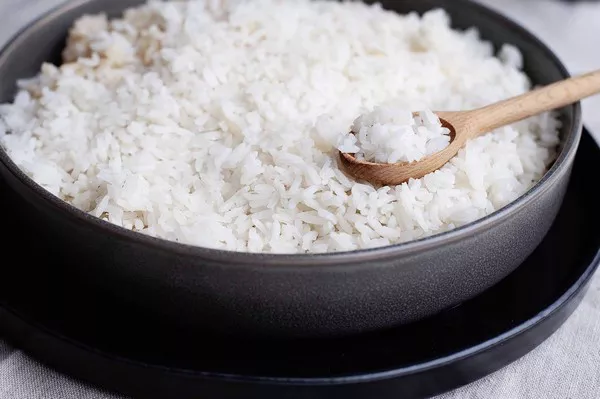China’s paramount leader, Xi Jinping, has redirected attention towards bolstering food production through a novel government policy, involving subsidized land repurposed from manufacturing facilities to incentivize farmers. This endeavor comes as escalating China-U.S. tensions and pandemic-induced global supply chain disruptions unveiled China’s vulnerability to fluctuations in U.S. soy and corn imports. The recent upheaval caused by the Russian incursion into Ukraine further accentuated China’s concerns, culminating in the issuance of the 2023 Central Government No. 1 Document in February, which fervently advocated for food security.
Addressing the Central Finance and Economics Committee during the second assembly, held on July 20, Xi Jinping underlined, “Food security stands as a nation’s utmost priority.” He advocated for fortifying the safeguarding of agricultural land, intensifying endeavors to enhance its quality, methodically expanding the spatial domain for agricultural production, and augmenting overall agricultural output capacity.
Xi Jinping emphasized that augmenting farmland would precipitate amplified grain production, thereby mitigating the need for extensive grain imports. This sentiment echoed his earlier declarations from December 2013, wherein he asserted during the Central Rural Work Conference, “The sustenance of the Chinese populace hinges on domestic self-reliance. The foundation of our sustenance should predominantly rest upon homegrown crops.”
However, the new policy faces resistance from individuals apprehensive about embracing agricultural practices.
Yang Caili, who once resided in an agricultural region but later migrated to Guang’an, Sichuan, for better employment prospects as a driver, expressed his disinclination to lease the newly accessible government land, even with accompanying subsidies. Caili contended, “Profitability in agriculture is elusive. Earnings would scarcely exceed a few thousand yuan per month at best. Consequently, individuals have gravitated towards urban centers to double their income.”
China’s status as a net agricultural importer dates back to 2004. Over the period spanning 2000 to 2020, the nation’s self-sufficiency ratio in food production dwindled from 93.6% to 65.8%, a revelation underscored in a January report by the Council on Foreign Relations.
One specific commodity, soybeans, epitomizes China’s predicament. Data divulged by China Customs for July indicated that in May, China imported a staggering 12.02 million tons of soybeans, marking a 24.3% upswing from the prior year and setting a new pinnacle for monthly imports. A communiqué from Chinese state media outlet Xinhua stressed, “Elevating soybean production capacity and bolstering self-sufficiency stands as a pivotal strategic maneuver to guarantee national food security.”
The American Soybean Association concurred, asserting, “China remains an indomitable force in global soybean demand, accounting for over 60% of worldwide soybean trade.”
The association further noted that China’s domestically cultivated soybeans merely account for less than 20% of its annual consumption.
Since 2021, Chinese authorities have reclaimed over 170,000 hectares (approximately 420,000 acres) of farmland as part of an endeavor to reduce reliance on imported foodstuffs.
In April, the Chinese government initiated a one-time financial subsidy scheme for farmers, with a fund allocation of 10 billion yuan, equivalent to approximately $1.38 billion.
Lai Rongwei, an assistant professor specializing in the economics and politics of modern China at Taiwan’s Lunghwa University of Science and Technology, expressed skepticism about Beijing’s policy reversal, citing past instances where agricultural land was converted to other uses and then reverted. Lai explained, “The agricultural land’s value has been substantially eroded after transitioning to real estate and industrial purposes. Now, it is earmarked for agricultural cultivation once more. Will this approach yield fruition? The land may no longer be suitable for farming.”
Lai further argued that coaxing rural youth who have migrated to urban centers back to farming would prove arduous, given their skepticism toward government slogans and policies, a stark contrast to the receptivity of individuals from the 1950s and 1960s.
Cai Shenkun, an independent analyst based in the United States who formerly served on the NBD Think Tank research team in China, specialized in the country’s financial matters. He contended that even with expanded available farmland, China’s ability to significantly boost agricultural production remains limited.
“China’s agricultural sector has historically operated on a small-scale familial model, lacking a mechanism capable of effectively managing extensive farmland,” Cai asserted. “Consequently, substantial increments in agricultural output have remained elusive.”
A 2023 report by the Virginia Tech College of Agriculture and Life Science presents a counterpoint, positing that Chinese agricultural productivity has experienced a “remarkable” surge since 1978, coinciding with China’s major economic reforms. However, the same report highlights the formidable challenges in maintaining or augmenting this pace of productivity growth.
Cai contended that resorting to inefficient policies such as expanding farmland underscores the Chinese government’s dearth of alternatives to mitigate import dependence. He further expounded, “Moreover, China’s agricultural operational expenses exceed those of foreign counterparts, while foreign agricultural product prices remain relatively stable. Chinese farmers face limited profit margins, and even potential losses, rendering them disinclined to invest in enhancing agricultural production conditions. Consequently, achieving significant production escalation appears unattainable.”
Lai also expressed skepticism about the efficacy of predominantly administrative measures to vastly augment agricultural land, positing that this approach may not significantly alleviate China’s food supply situation. Nonetheless, he acknowledged that such measures may be aimed at aligning with Xi Jinping’s vision, likening it to Mao Zedong’s past models.
Drawing parallels, Lai noted, “The prior era of Mao witnessed a large-scale steel production drive that repurposed considerable farmland which could have otherwise been utilized for agriculture, yielding scrap iron as a result. Presently, Xi Jinping aims to ensure food security by repurposing non-agricultural land, devoid of agricultural value, into cultivable tracts.”

